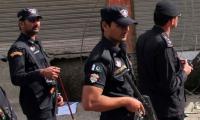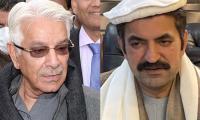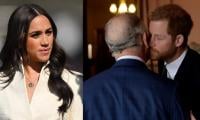When news broke of an alleged attempt to remove the security detail of Oromo activist and media mogul Jawar Mohammed, hundreds of his supporters flocked to his residence in Addis Ababa, the Ethiopian capital and capital of the Oromia region. Jawar, who was one of the organisers of the Oromo protests that started in 2015 which ultimately led to the change in government in 2018, was provided security by the federal police after returning from exile last year.
The incident came on the heels of Prime Minister Abiy Ahmed, who is also leader of the Oromo Democratic Party (ODP), accusing unnamed media owners with foreign passports of fomenting instability, a disguised attack on Jawar, who holds American citizenship and is therefore not legally Ethiopian (as Ethiopia does not allow dual nationality).
Following the rise of Abiy to power, the Oromia regional state has witnessed intense political contest among parties vying to win popular support, which has resulted in increasing intraethnic tensions.
A similar rift in the Amhara regional state between different Amhara political forces was the cause of the alleged attempted coup in June this year that killed the president of the region.
Considering Ethiopia's first-past-the-post electoral system, which focuses electoral contest at the district and regional level, intraethnic rivalry is likely to intensify as the 2020 national elections approach. The system incentivises parties to take combative political positions and embrace ethnonationalism in a bid to present themselves as more ethnically authentic.
These intraethnic tensions threaten the stability of the country; curbing them is a fundamental precondition for moderating interethnic politics and preserving national stability. Abiy has to work on both levels to push for national unity.
In Ethiopia, the official recognition of ethnicity as the principal instrument of political organisation was, perhaps, inevitable considering that the armed groups that overthrew the communist Derg regime in 1991 were organised along ethnic lines.
The principal armed group, the Tigray People's Liberation Front (TPLF), merged first with the Ethiopian/Amhara National Democratic Movement (ANDM – now ADP), and subsequently midwifed the formation of the Oromo People's Democratic Organisation (OPDO – now ODP) and the Southern Ethiopia Peoples' Democratic Movement (SEPDM).
These groups formed a formal coalition called the Ethiopian People's Revolutionary Democratic Front (EPRDF), which came to be dominated by the TPLF and eventually resulted in increasing discontent among non-Tigre groups.
Following the death of Prime Minister Meles Zenawi in August 2012, TPLF's hold on power started to loosen. Riding on the waves of popular protests that started in October 2015, first in Oromia and subsequently in Amhara regions, home to the two biggest ethnic groups, the OPDO and ANDM started to assert their autonomy and ultimately joined forces to orchestrate an internal party coup that brought Abiy to power in April 2018.
The manoeuvres that brought Abiy the premiership were a continuation, rather than reversal, of the ethnic foundations of the political, social and constitutional framework, with a strategic Oromo and Amhara alliance unseating the dominant Tigre elite. His rise to power positioned the Oromo at the centre of Ethiopian politics, but did not quell historical grievances over their perceived dispossession and victimisation at the hands of the historically dominant Amhara elites. Oromo ethnonationalists, therefore, continue to make demands, including "ownership" of the national capital as well as territorial claims over parts of Amhara region.
The rise of ethnonationalist forces and their opposition to more moderate parties has caused tensions not only within the Oromo community, but also within other ethnic groups in the country. They threaten to exacerbate interethnic strife even further.
Abiy understands the potential dangers of interethnic contestation and the importance of weaving a new, inclusive, future-oriented Ethiopian narrative that recognises and seeks to transcend past grievances. He has emphasised the role of all groups in Ethiopia's formation and resistance to colonialism, while acknowledging its failings and historical injustices.
But he continues to face strong criticism from Oromo ethnonationalists who accuse him of belittling perceived past injustices, dispossession and humiliation of Oromos.
Non-Oromos, notably Amhara ethnonationalists, in turn, claim the prime minister is too soft on the Oromos, while reacting strongly to perceived security threats involving other groups, including the Somali, Amhara and Sidama.
Abiy's desire to pull the extremes to the centre through an unfamiliar (for the Ethiopian context) politics of compromise resulted in a familiar outcome - everyone is dissatisfied. To try to address interethnic tensions, he is currently pursuing the goal of transforming EPRDF-the-coalition to EPRDF-the-party. This transition has faced stiff resistance from the TPLF.
Nevertheless, the fate of the merger hinges more on intra-ODP unity than on TPLF compliance. It is far from certain if there is a thin, let alone, critical majority within the ODP that supports the merger.
The recent incident involving Jawar and signs of rejection of Abiy and his philosophy of Medemer (an Amharic word for synergy, unity through recognition and cooperation) in Oromia are a manifestation of and may further encourage resistance to the merger.
Even if ODP manages to overcome the internal rift, policy differences between ODP and ADP, including notably over Oromo claims of "ownership" of Addis Ababa as well as Wallo areas, pose another hindrance. Any compromise on these issues would weaken the two parties vis-a-vis ethnonationalists in their respective regions who have taken strong populist positions on these matters.
Meanwhile, the prime minister has also embarked on building intraethnic consensus. In early October, he mobilised the three prominent Oromo parties, namely, the ODP, Oromo Federalist Congress and Oromo Liberation Front, to agree to work together, which was seen in some corners as a putative power-sharing arrangement.
Excerpted from: 'The threat ofintraethnic strife in Ethiopia'.
Courtesy: AlJazeera.com
India uses Afghanistan as a backstage area to carry out terrorist attacks against Pakistan
Another report by the Pakistan Institute of Peace Studies states that 78 per cent of attacks have been carried out by...
Pakistan stands at the forefront of this crisis, generating a staggering 3.3 million tonnes of plastic waste annually
Today, a total of 11,000 children are attending Daanish schools in Punjab
The emotional instability of parents inculcates a range of psychological issues in children
The current way of dealing with the environment and climate change is no longer adequate







